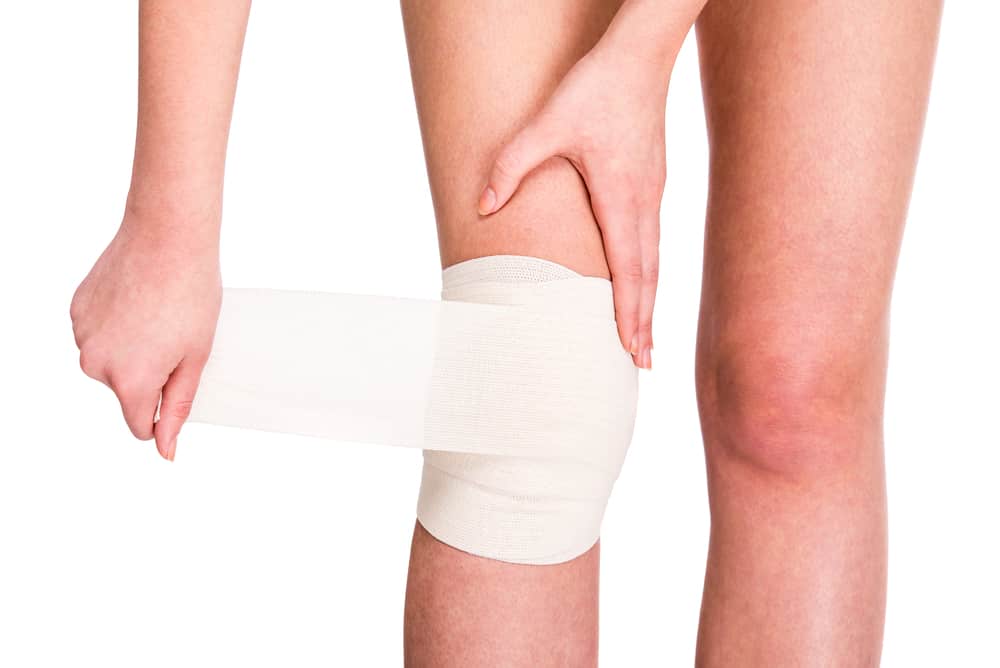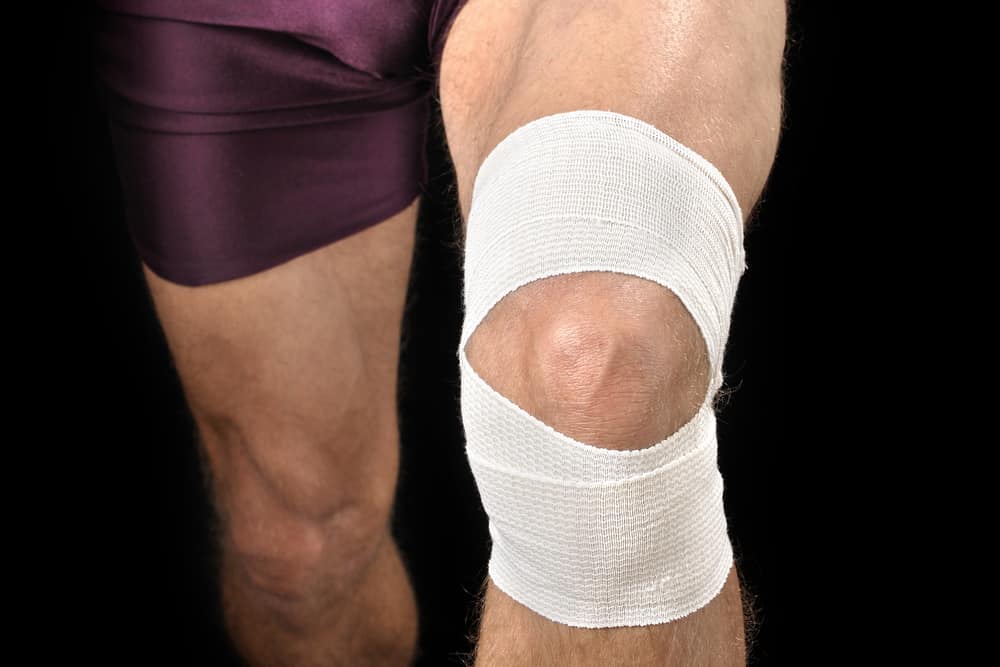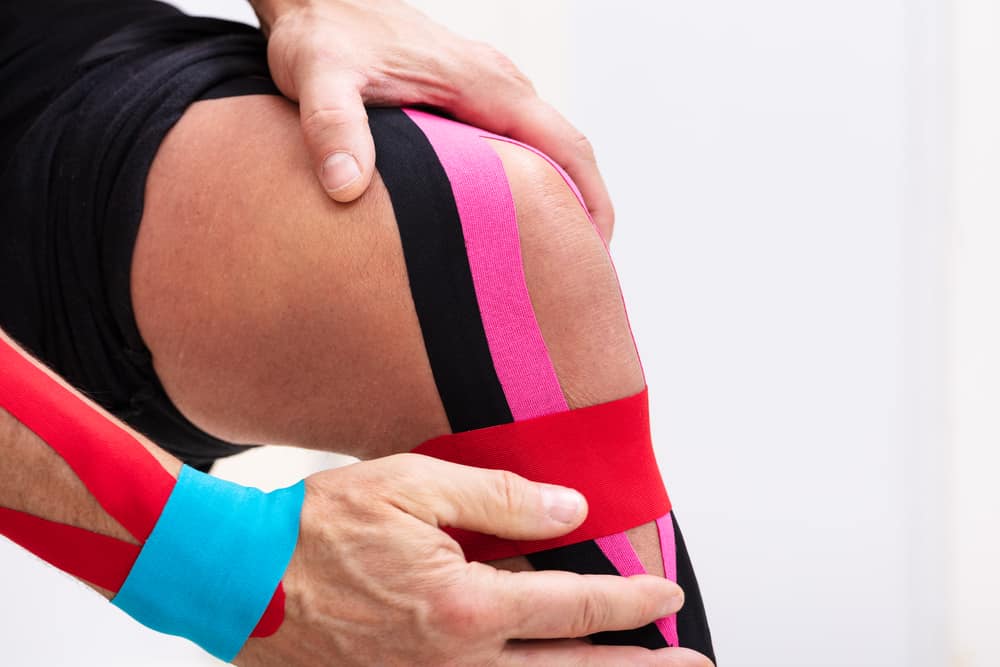Knee bracing can reduce joint pain and speed up recovery after exercise. That much we know, but is it possible to get the same benefit from a DIY version of the sleeves you see at stores?
While it might not be as professionally finished, a homemade knee brace can still hold some therapeutic benefits.
If you’re looking for a guide on the best ways to brace, tape, or wrap your knees at home, you’ve come to the right place!
By the end of this post, you’ll be able to choose between three different DIY ideas and how to make the most out of them.

Why Use a Homemade Knee Brace?
When you compare it to commercial options, a makeshift knee brace might not look fancy. Yet, it can have a few advantages.
It Works for Emergencies
In a lot of cases, people resort to making their own knee sleeves when they don’t have the time or the availability to go and get a prefabricated one.
It’s Highly Adjustable
Other people prefer homemade ones because they’re easier to customize. Premade ones aren’t as comfortable for everyone, and they can cause skin allergies. In DIY projects, there’s more room for customization to get exactly what you need.
It’s Budget-Friendly
It’s also good to keep a few tricks up your sleeve to use when you’re tight on budget. That’s especially true if you’ll only be using the brace only once or twice, and it’s not really worth splurging on.
It Can Be an Enjoyable Experience
Just like other DIY projects, there’s an appeal to using something of your own creation. So, if you’re a crafty person, you might enjoy the idea of creating a brace at home.
3 Homemade Knee Braces to Try
Let’s jump right in with three different makeshift knee braces to keep the joint pain away:
1. Wrap Your Knee With Elastic Bandage

The first method that you can try out is also the most common one. You can easily get a roll of elastic bandage from any pharmacy and use it to make a wrap-sleeve at home.
The good thing about this method is that the bandage is versatile and reusable. You don’t have to use it just for your knee, either. The same roll can brace your wrist, ankle, or elbows.
You could even roll it back on itself to create a patellar strap as prophylaxis for people prone to getting jumper’s knees.
Plus, someone else in the household could also use it since it’s very forgiving when it comes to size.
On the downside, rolling the bandage tightly around your own body can be tricky. Nailing the wrap technique needs quite a bit of dexterity. So, you might have to ask someone to lend you a hand.
Here are some tips to help you get the right fit every time:
- Keep your legs extended
- Start wrapping two inches below the knee and make your way upwards
- Alternate the rolling to create an infinity-like swirl
- Don’t tighten the wrap around the knee cap
- Tuck the wrap inside itself if you don’t have the metal clasp
2. DIY a Knee Brace Out of an Old Sock
Another crafty way to make a homemade knee brace is by cutting a sock into a compression sleeve.
There isn’t much to it, but it’s a decent alternative if you can’t get your hand on a roll of the elastic bandage at the moment.
It also saves you the hassle of wrapping and getting the fitting right every time. You just cut the feet off, slip the rest on, and call it a day.
Some people might even wear it under a regular prefabricated knee brace to reduce the itching or warm their legs up.
The only downside is that it isn’t as forgiving as bandages. You can’t refit the sock to your measurements. You just have to cut and hope for the best compression you can get.
However, you can try and work on your DIY technique a bit. Here’s how:
- Pick a long sock to give yourself more room to work with
- Use sharp scissors to reduce fringing
- Cut two socks to get equal compression on both knees
- If the sock is too tight around the knee cap, cut a circular hole to reduce pressure
- Go for a tighter sock to avoid slippage
3. Use Kinesiology Tape

If traditional bracing isn’t your cup of tea, you could consider Kinesio taping. It’s a method of stabilizing the joint without wearing a full-on knee sleeve.
There’s a debate about the efficiency of kinesiology. Yet, recent studies indicate that regular usage can have a role in reducing pain and joint stiffness in people with osteoarthritis.
It could just be the placebo effect, but hey, if it works, it works!
There are benefits to using tape since it’s more subtle than a cutout sock. However, it’s not the most budget-friendly. Plus, it can also be tricky to do it yourself.
Here are some tips for taping your knee successfully:
- Tape above and under your knee cap horizontally
- Create a y-shaped piece to lay vertically from the thigh to the knee
- Overlap the two y-ends over each other to increase support
- Lay the vertical piece with less stretch to allow your knees to bend comfortably
- Keep any tape from stretching over the knee cap itself
When Should You See a Doctor?
Knowing how to make your own DIY brace isn’t enough if you don’t know when to leave it to the professionals. After all, there’s only so much that a cutout pair of socks can do for a serious knee injury.
Here are some parameters to keep in mind when you’re evaluating the situation:
1. Size Up Your Joint
If your legs are swollen beyond the regular post-exercise range, it might be safer to go for a quick check-up.
For one, a tough trauma to the knee can lead to blood accumulation around the joint that causes muscle stiffness.
Another obvious thing that could very easily be ruled out by a physical examination is a dislocation, especially if it makes a popping noise.
On the other hand, it could be a case of septic bursitis that needs aspirated fluid culture and a prolonged treatment course of antibiotics. Otherwise, it could end up leading to muscle atrophy!
2. Rate Your Pain Level
Pain can also be a good gauge of the case. Severe pain is often a sign of more pressing problems, especially if it’s sudden and sharp.
Usually, ACL tears cause the highest pain level among all other knee injuries. However, you need to keep in mind that everyone’s threshold is different, and the numerical scale isn’t always the most accurate.
Instead, try to evaluate how the pain is affecting your life. Is it tolerable, or can you go on about your day regularly? It might also be useful to compare the sensation to other relevant situations like a fracture or so.
3. Consider Your Case History
Taking your previous medical history is a vital part of deciding whether or not you need a trip to the hospital.
For instance, gout, systemic lupus erythematosus, arthritis, obesity, or even something as simple as a viral infection can make your knee pain worse.
Take note of how frequently you experience this pain and what triggers it. Even if something doesn’t seem all that relevant, it could end up making all the difference when you’re getting diagnosed later on!
Plus, you’ll know to head to the ER if your joint pain is also accompanied by fever, increased heart rate, or numb nerves.
Final Thoughts On Homemade Knee Brace
Using a homemade knee brace can save you in a pinch by stabilizing the joint and relieving minor pain through compression.
From elastic bandages to the good-old cotton sock, there are ways to get crafty and DIY your very own brace. The key is figuring out which of those handy methods is going to work best for you.
In the end, it’s important to listen to your body and keep an eye out for any warning signs.
